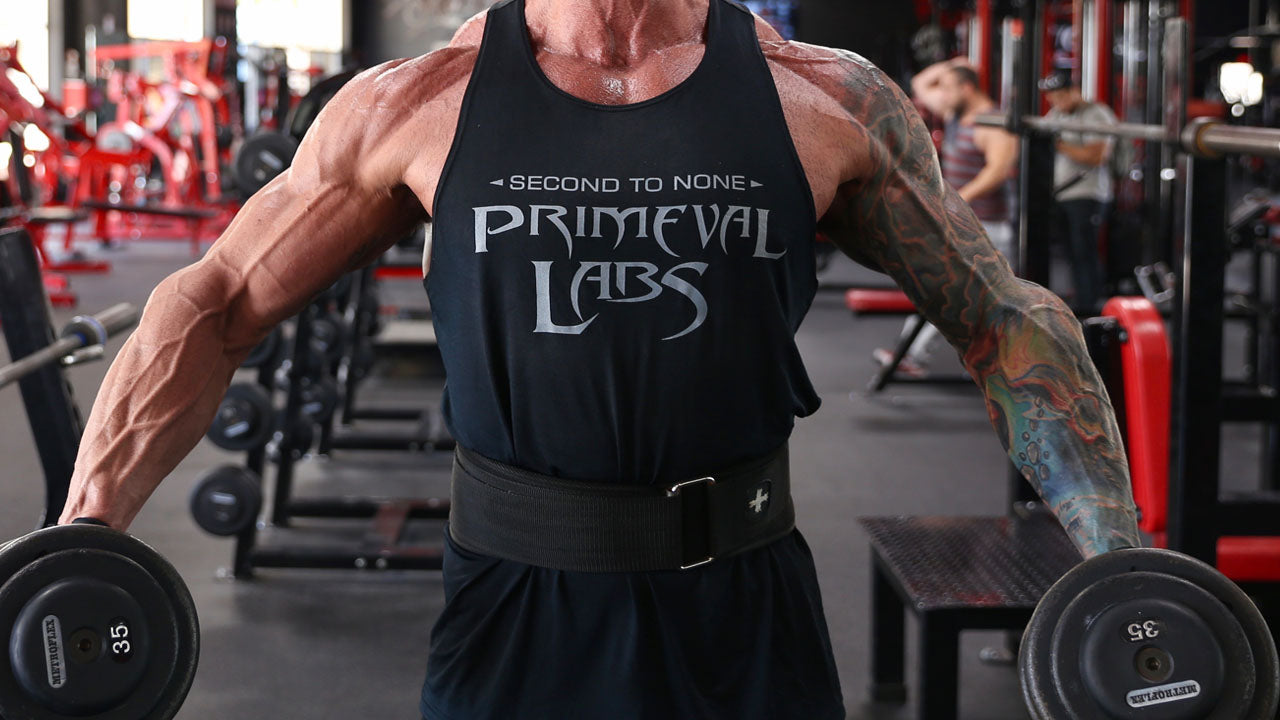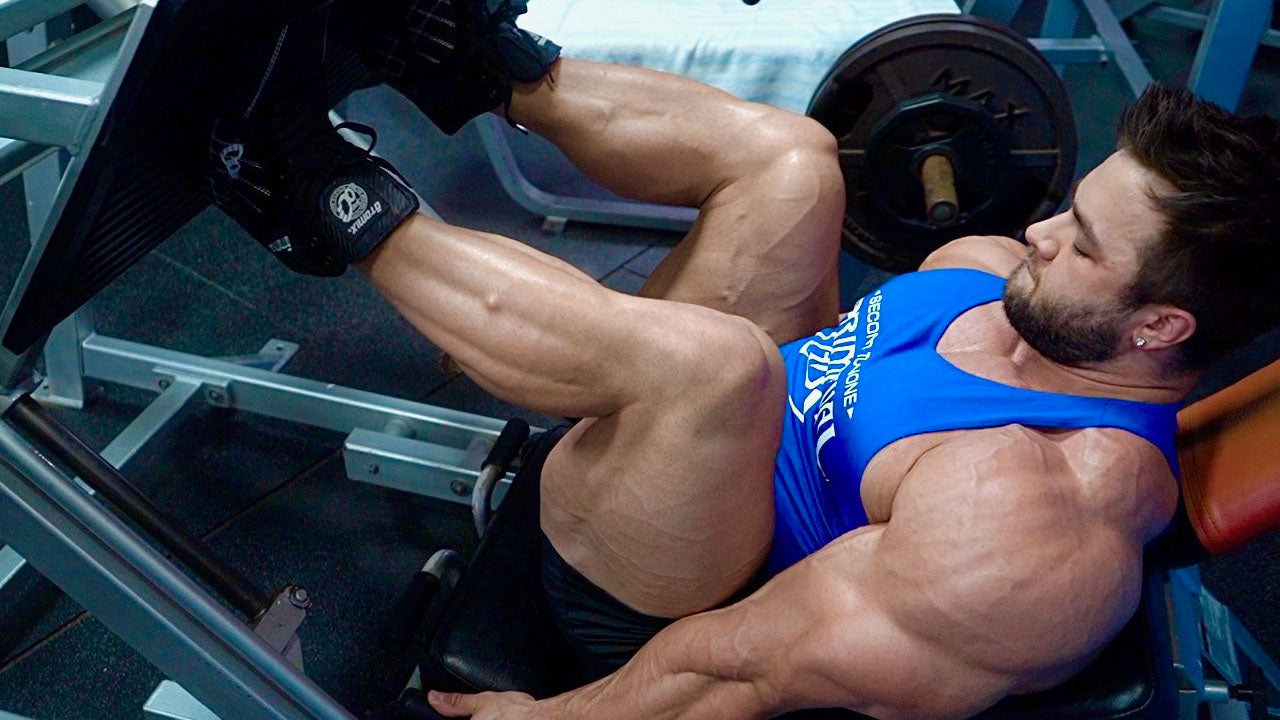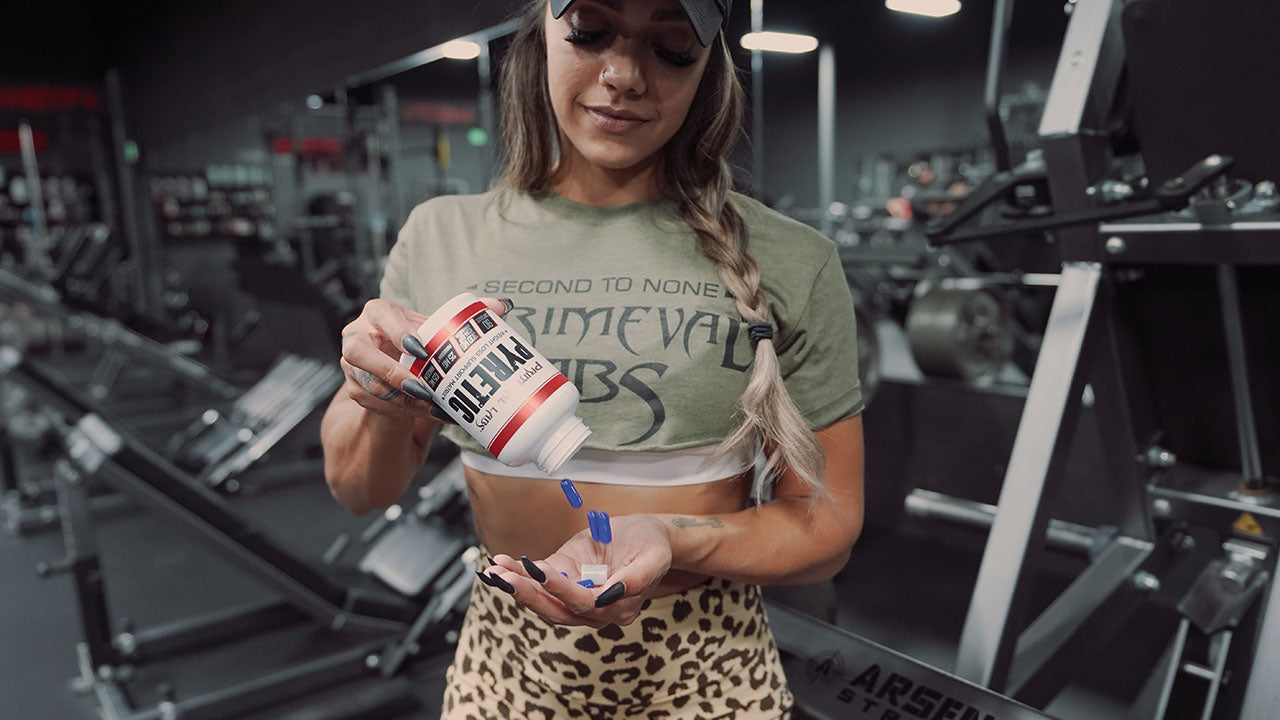Whether by choice, mandate, or travel obligations, we can’t always train in our usual surroundings. And now, more than ever, individuals are having to figure out how to train without their typical arsenal of barbells, bands, cables, machines, and dumbbells.
Fortunately, you can still have a killer workout and make some serious gains using little to no external weight at all!
Today, we’re going to show you 5 ways to make dumbbells heavier so that you can continue to maintain your fitness no matter where you are or what equipment you have access to!
Let’s GO!
5 Ways to Make Lighter Weight Feel Heavy
Increase Time Under Tension
Most of us are used to banging out sets in the neighborhood of 6-15 reps. Typically, these moderate rep ranges keep the muscles under tension between 20-40 seconds (assuming you’re using a 1-2 second eccentric and 1 second concentric with no pauses at the top or bottom of the movement).
But, when you’re dealing with light weights, it’s highly unlikely that your major muscle groups (chest, back, legs) will get fatigued using traditional rep schemes. In order to feel the burn and fatigue the muscles, employ measures that increase the time under tension.
For example, instead of aiming for 6-15 reps, perform a 2-minute work set. It’s unlikely you will be able to perform continuous reps for the entire 2-minute block, but that’s ok.
Use rest-pause until the 2 minutes is up if you cannot last the whole block. 2 minutes of non-stop work will make any weight (even bodyweight) feel incredibly heavy by the end. This training technique might seem a bit odd, until you realize that the 2-minute leg press is a staple movement for individuals looking to build massive legs.
Not only will this produce a powerful muscle building stimulus, but it will also generate one hell of a muscle pump.
If you’re feeling particularly masochistic, try doing a 2-minute work set of Bulgarian split squats where you work one leg non-stop for two minutes maintaining constant tension on the working leg. Even using only body weight, this movement will humble the strongest lifters.
Manipulate Tempo
As we just mentioned, most of us are accustomed to performing reps in a piston-style (1 second down, 1 second up) fashion. When you have heavy weights, this is perfectly fine as the sheer magnitude of the load is enough to maximally stimulate your muscles and produce a powerful training effect. But, when you’re dealing with lighter weights or bodyweight exercises, the load isn’t enough to maximally stimulate your muscles.
To counter this, you can manipulate your lifting tempo to make each rep last longer.
Use a 3-5 second eccentric, followed by a 1-2 second pause in the stretch position, then perform the concentric and again hold for 1-2 seconds at peak contraction.
Instead of a rep lasting 2-3 seconds, it can now last 5-10 seconds. Again, this will make even your body weight feel challenging. This also helps eliminate the stretch reflex and makes your muscles have to do more of the work.
For example, instead of slamming out a bunch of fast reps of push ups, take 5 seconds to lower your torso to the ground, hold the bottom position for 1-3 seconds and then slowly press back up.
Increase Range of Motion
Increasing the range of motion is yet another way to make lighter weights feel heavier.
By increasing the range of motion that your muscles go through, you’re increasing the total amount of work they have to perform. (Remember, work equals force multiplied by distance).
Since we’re limited by the amount of force (weight) we’re working against, increasing the distance that force travels effectively increases the total amount of work done, which means more gains!
Again using the push up as an example, instead of placing your hands on the floor, use a set of push up handles or place 1-2 textbooks under each hand. This allows your chest to travel below the level of your hands, increasing the stretch and challenge on your pecs.
Yet another way to do this is to perform “deficit” lunges and Bulgarian split squats. Elevate your front (non-working) leg on a box, bench, exercise step, or book, and perform the movement.
The slight increase in elevation of the lead leg increases the amount of hip flexion, allowing you to drop deeper into your lunge or split squat, which means more work has to be done by the quads, glutes, and hamstrings.
Shorten Rest Periods
Most of us are used to taking 2-3 minutes of rest between sets when we’re training at the gym. This is because the weights are so heavy, you need to give your muscles and cardiovascular system sufficient time to recover and regenerate ATP so they can maintain a high level of performance.
Lighter weights and bodyweight exercises aren’t nearly as fatiguing peripherally or centrally, which means you don’t need to rest 2-3 minutes between exercises.
Using short rest periods (20-30 seconds) and flowing between non-competitive movements keeps the intensity high while allowing you to also maximize every minute of training.
One way to set this up is:
- Push Up
- Squat
- Row
- Lunge
- Plank
Stack 2 (or 3) Competitive Movements back to back
Supersets are a common technique used by busy individuals to complete a lot of work in little time.
Typically, supersets are performed with opposing muscle groups (chest & back, biceps & triceps, etc.), but they can also be performed using the same muscle group. These agonist-agonist supersets are also referred to as compound sets.
Performing the two competitive exercises back to back is a great way to make lighter weights feel heavier.
One example of this is to perform chest dips for max quality reps and then go straight into push ups.
Another example would be to perform walking lunges and then squats.
Fuel Your At-Home Workouts with Ape Sh*t Max
Sure, you might not have the option to train at the gym right now, but that’s no reason you still can’t get a great workout from the comfort of your living room.
To help keep you amped up and fueled for your training sessions, we suggest Ape Sh*t Max.
Ape Sh*t Max is a delicious-tasting high energy pre workout supplement formulated to support energy, focus, and athletic performance.
Get Gains Everywhere
Don’t let the lack of heavy weights prevent you from having a killer workout. With our 5 tips you can get gains virtually anywhere without adding weight to dumbbells.
Max out your workout by:
- Increasing time under tension
- Manipulating workout tempo
- Increasing range of motion
- Shortening rest periods
- Stacking competitive movements (supersets)
Challenge yourself with your workout and combine any of the 5 tips we’ve given you. Good luck!















Leave a comment
This site is protected by hCaptcha and the hCaptcha Privacy Policy and Terms of Service apply.